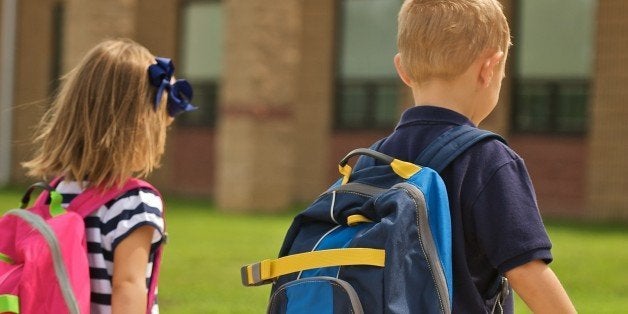
It's that time again... children are returning to school. New clothes, new classes, new friends and the same old problems that students and parents alike have to manage each year. Four such problems -- let's call them bad back-to-school habits -- are perhaps the easiest to solve and yet the likeliest to persist, as their solutions require a concerted, committed effort to change. Sleep deprivation, overloaded backpacks, poor posture and lack of sports preparation are back-to-school habits that are not only bad for your child's body, but could also lead to bigger problems if they're not addressed.
In an era when more and more are schools adopting competitive standards and multiple after-school activities are the norm, sleep deprivation is rampant among students, especially those juggling new schedules and routines. This problem causes decreased attention spans, reduced cognition, fatigue and decreased working memory. Sleep deprivation complicates the collective student-parent goals of good grades as pressure looms to select, apply and compete for desired high schools or colleges. How can you expect a student to perform if his/her cognitive skills and memory are compromised from lack of sleep? A high GPA is next to impossible when attention, memory and ability to solve problems are compromised.
While there is no solution that will make everyone happy, there is one that works. Simply stated, students must have more sleep, even if that means cutting back on the extracurricular activities you've loaded into their schedules. With enough sleep, students can actually make shorter homework time more effective and do so while being healthier overall.
The weight of backpacks today is also an ongoing, rampant problem. A 2010 study using standing MRI with a small number of subjects revealed changes in the lumbar spine curve and disc height with increasing backpack weights. A larger survey of 3,500 students revealed that 64 percent admitted to having back pain at some time with backpacks, and 17 percent reported seeing a doctor for low back pain. Yet this is a problem for which, reportedly, very little has been done to effect change in actually removing the weight, rather than merely redistributing it.
In 2014, California Senator Hueso introduced a bill (SCR-86) acknowledging the health risks that heavy backpacks pose to school children and recommending certain measures to be taken, in that regard, to avoid injury. Among the recommendations was a call to educators to promote innovative homework strategies that lessen the need for students to take school materials, such as heavy books, to and from school every day.
Perhaps as technology evolves and wisdom prevails, publishers and educators will more expansively embrace digital textbooks, thereby substantially reducing the physical strain on the low backs of our young students. Until then, the key for parents is choosing ergonomically friendly backpacks and learning how to wear them properly. The American Chiropractic (ACA) has some helpful tips.
Poor posture is another bad habit in students causing neck and upper back aches, especially in those who look down for extended periods of time at their smart phones or tablets. The rounded shoulders posture can contribute to upper back and lower neck aching as well. How many times have you told your son or daughter to sit up straight? And beyond muscular aches and pains, poor posture may have an effect on a student's overall outlook.
An Ohio State University study found that students in good posture or rounded shoulder posture answered the same questions differently. One group of students was told to either sit up straight and scoot back in their chairs with their chests out, and the other group was told to slouch and round forward when taking the test. The students with good posture during the study had a more positive opinion of their worth to a prospective employer and the rounded posture students had a more negative opinion of their worth.
Combating poor posture is a matter of practice and repetition. As Livestrong.com suggests, have your child watch TV or play computer games while sitting on a stability ball, which strengthens his/her core, and make it easy for your child to use correct posture by keeping his/her desk, chair and computer appropriately sized and aligned.
Finally, after-school sports can present an entirely different set of problems for students. The first is under-preparation. Is the young athlete prepared for the next season in the school or club sport? A sudden change in training can lead to muscle strain, stress fractures (in the feet, knees, hips and low back) and fatigue. This fatigue requires more sleep until the athlete can adapt to the training load. A large homework load can make getting the necessary sleep nearly possible and bring us right back to the first topic of this article. If a young athlete is training too much, the chronic load can create physical and physiologic problems such as stress fractures. The chronic inability to adapt to training can lead to fatigue, sleep disturbances, diminished appetite, mood swings (sometimes difficult to determine in a teenager), and decreasing performance in the sport.
A quick overview of your son or daughter's health and function can help determine their status: Have they had many colds and flus? How is their sleep quality? Do they no longer want to play or practice their sport? How is their appetite? Are they performing well in practice? Have they performed any form of training to prepare for the sport? These questions can help determine if your son or daughter is prepared, under-prepared or over-trained, and help you decide whether they need some extra help, a lighter load or a break from the sport altogether.
Going back to school should be a positive time for your child, not bad for his/her body. Keeping these four common problems in check is your family's best bet for a happy, healthy school year.